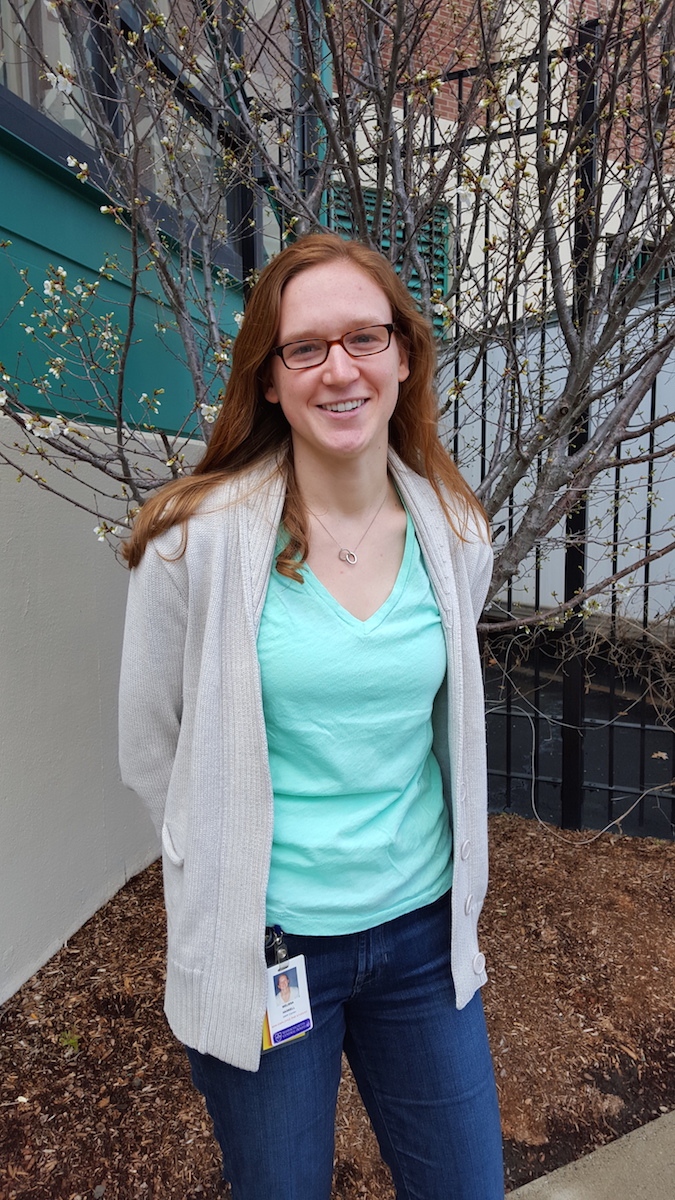The Daily Free Press recounts the HUBWeek event in which Center Director Bruce Rosen and medical illustrator Danny Quirk spoke about the intersectionality of human anatomy and visual art.
Meet Our Students: Melissa Haskell, MRI, And Modeling Motion During Scans
 |
|
Melissa Haskell
|
Melissa Haskell joined the MGH Martinos Center for Biomedical Imaging in the summer of 2014, after starting the Harvard Biophysics Ph.D. program in the fall of 2013. A graduate of Bowdoin College, where she majored in Physics and minored in Computer Science, she is applying her unique experience and training in developing new tools to aid in clinical applications of MRI.
We checked in with Melissa about her time in the Center thus far: what she’s been up to, how her undergraduate work prepared her for it and what about the environment there has proved especially helpful in pursuing her goals. Here’s what we learned.
She is developing methods to improve magnetic resonance imaging, retrospectively correcting for patient movement during scans, for example, using nothing other than the raw data from the MRI scanner
“I work in Larry Wald’s lab on motion modeling and correction for MRI,” she said. “When I started in the lab, Larry had an idea to add unknown motion parameters into the forward model used to reconstruct MR images, and then determine their values using the extra degrees of freedom gained from parallel imaging.
“I am also co-mentored by Steve Cauley, a member of our group with a strong background in mathematics and optimization, to put this idea into a reconstruction algorithm. We use reduced modeling to make the search for motion parameters computationally feasible, and joint optimization techniques to make the method more robust. We call our technique TAMER, for TArgeted Motion Estimation and Reduction. Our current version is designed specifically for 2D multishot TSE brain imaging, one of the most common clinical protocols.”
Her research in the Martinos Center is a natural outgrowth of her undergraduate work at Bowdoin College, a small liberal arts school in Brunswick, Maine
“My undergraduate research was focused on developing biomedical optics imaging methods. What I enjoyed about the work was the combination of technical development and clinical applications. Studying physics and computer science as an undergraduate at Bowdoin taught me how to describe problems in mathematical and computational ways and all of the method development for biomedical imaging at the Center seemed like a strong fit for my skills and research interests.
“After rotating in Larry’s lab for a few months and taking Elfar Adalsteinsson’s course on MRI at MIT, I became more interested specifically in MRI. When Larry proposed the motion project it seemed like a great fit for me because I knew I wanted a computational project.”
She sees the diversity of expertise and experience in the Martinos Center as invaluable to her growth as a researcher
“If I have a question or want to learn more about a certain area of my research, chances are there is someone in the Center who would be willing to help, even if they don’t work in my group. This is especially helpful for me since my background is almost entirely technical. Having physicians and physician-scientists with whom to work allows me to gain a more clinical perspective, as well as an ease of performing clinical experiments I hope to embark upon later in my thesis work.”


